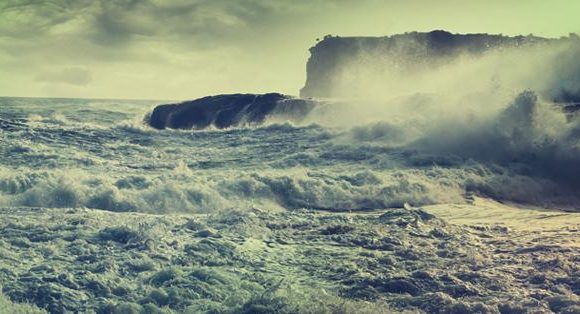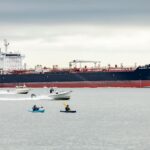Climate Change: What Does It Mean For Marine Life?

Climate change has had a startling effect on the rising temperatures of the oceans. Scientists predict that water temperatures will hit 1.4 – 5.8◦c by the end of the century. This change in the weather and ocean temperature is having a fundamental effect on the marine life that depends on it.
Scores of southerly mammals are heading north due to those warmer waters threatening their ecosystems. According to scientists, ice cover in the arctic has greatly reduced since 2012, and it is now at its lowest level in 30 years. Ice reduction in the arctic is affecting a large number of fish, birds, penguins, polar bears and sea lions, forcing them from their habitats.
Although polar bears gain a lot of the news coverage when it comes to climate change, there are a great number of marine life that are diminishing due to the warmer climate. Today we will cover four of them:
Penguins
 The waning Antarctic sea ice means species such as the Emperor penguin are in severe decline. Other species like the Adelie and Chinstrap have adapted by moving and forming colonies around the Antarctic, depending on the availability of ice. Although half of the penguin population had decreased in the last 50 years due to warming temperatures, they also face risk from the sun and heat and damage it can bring to their flippers. Too much heat also forces the penguins to cool off in the water, making them vulnerable to predators.
The waning Antarctic sea ice means species such as the Emperor penguin are in severe decline. Other species like the Adelie and Chinstrap have adapted by moving and forming colonies around the Antarctic, depending on the availability of ice. Although half of the penguin population had decreased in the last 50 years due to warming temperatures, they also face risk from the sun and heat and damage it can bring to their flippers. Too much heat also forces the penguins to cool off in the water, making them vulnerable to predators.
 Fish
Fish
Although the stress of overfishing for commercial purposes has long been to blame for the decrease in fish stocks, the warming sea temperatures are causing fish, such as the trout, to seek out new habitats. Acidification also changes the pH level in the water which affects fish eggs, which are more sensitive. The temperature changes are not only affecting the size of the fish but also the sex, which can create a disproportionate population.
Whales
 Large varieties of whale face losing their habitats and are forced to move north as waters warm. With migration patterns threatened, whales are working harder to survive, which is limiting their chances of reproductive success. Climate change is also affecting the decreasing abundance of prey they have to survive off. With UV radiation causing a fall in the population of krill, a major food source for many marine life, it remains to be seen if the whale can adapt.
Large varieties of whale face losing their habitats and are forced to move north as waters warm. With migration patterns threatened, whales are working harder to survive, which is limiting their chances of reproductive success. Climate change is also affecting the decreasing abundance of prey they have to survive off. With UV radiation causing a fall in the population of krill, a major food source for many marine life, it remains to be seen if the whale can adapt.
Seals
 The majority of seals live in the Antarctic region and they are dependent on the cooler air, which provides them with food. As the air is warmer there are fewer resources, forcing unhealthy females to search for food, often abandoning their pups. As females are now moving further in the search for food, they leave behind the dominant male of the pack and start to mix with other males, which increase the selection in the gene pool. The warmer air also brings the threat of diseases and viruses to seals.
The majority of seals live in the Antarctic region and they are dependent on the cooler air, which provides them with food. As the air is warmer there are fewer resources, forcing unhealthy females to search for food, often abandoning their pups. As females are now moving further in the search for food, they leave behind the dominant male of the pack and start to mix with other males, which increase the selection in the gene pool. The warmer air also brings the threat of diseases and viruses to seals.















